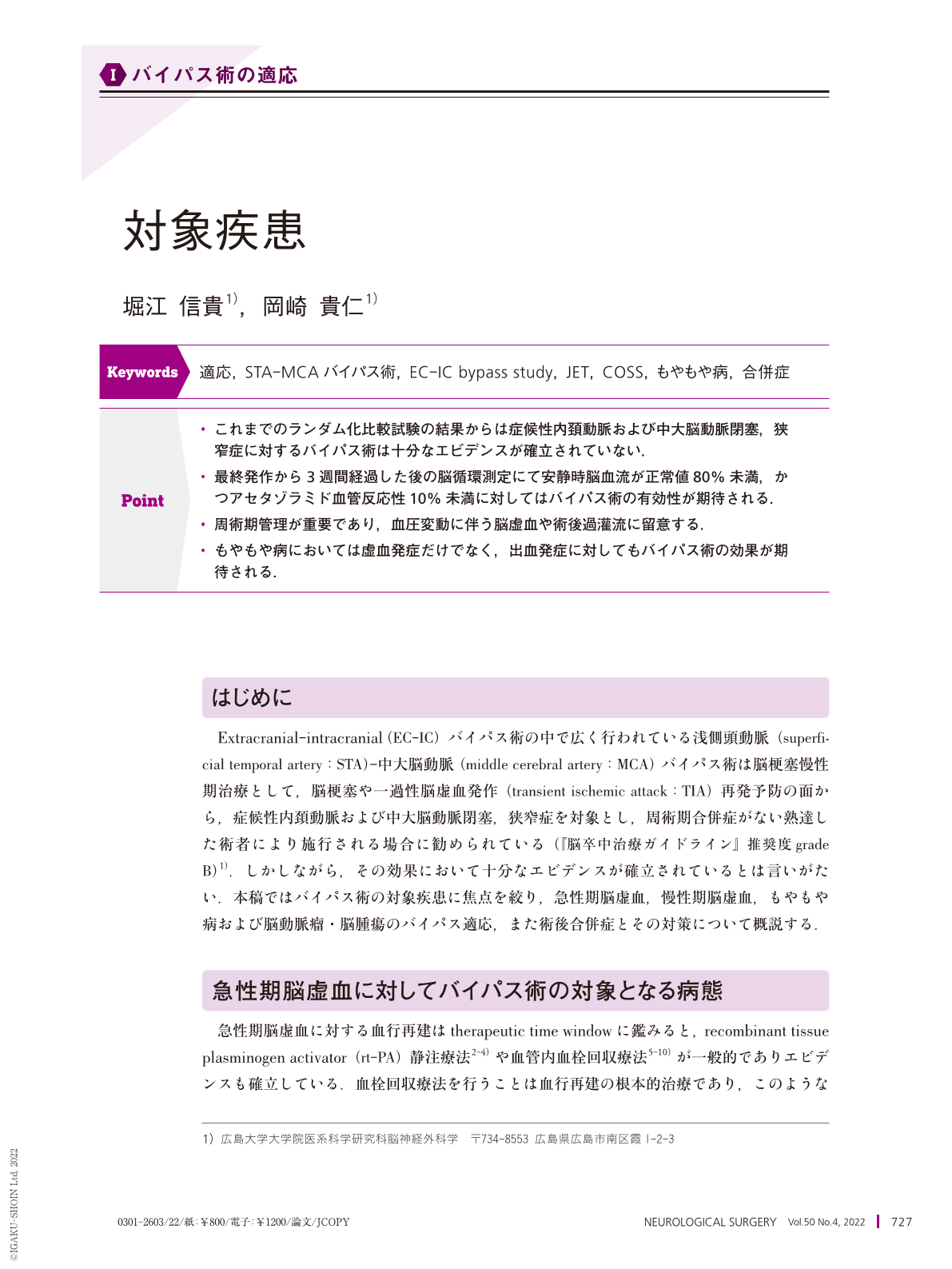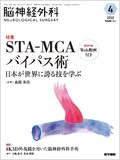Japanese
English
- 有料閲覧
- Abstract 文献概要
- 1ページ目 Look Inside
- 参考文献 Reference
Point
・これまでのランダム化比較試験の結果からは症候性内頚動脈および中大脳動脈閉塞,狭窄症に対するバイパス術は十分なエビデンスが確立されていない.
・最終発作から3週間経過した後の脳循環測定にて安静時脳血流が正常値80%未満,かつアセタゾラミド血管反応性10%未満に対してはバイパス術の有効性が期待される.
・周術期管理が重要であり,血圧変動に伴う脳虚血や術後過灌流に留意する.
・もやもや病においては虚血発症だけでなく,出血発症に対してもバイパス術の効果が期待される.
Previous randomized clinical trials have so far failed to establish the efficacy of extracranial-intracranial(EC-IC)bypass in the prevention of secondary ischemic strokes. For patients with a recent transient ischemic attack or ischemic stroke ipsilateral to a stenosis or occlusion of the middle cerebral or carotid artery, EC-IC bypass is not recommended as per the American heart association/American stroke association guidelines(Class Ⅲ, Level of Evidence A). However, patients with severe hemodynamic impairment(misery perfusion)are at high risk of developing stroke, and EC-IC bypass is recommended as per the Japan stroke guideline 2021, provided that the patients show cerebral blood flow less than 80% from baseline and cerebral vascular reserve less than 10%. Perioperative management is also important in preventing ischemic complications and hyperperfusion. Some adjunctive drugs, including minocycline and edaravone, have been reported to be effective against brain damage from hyperperfusion. Regarding Moyamoya disease, EC-IC bypass has been established as a recommended strategy for ischemic presentation, hemorrhagic presentation, hemodynamic impairment, and choroidal anastomosis. EC-IC bypass is also necessary for specific types of aneurysms, including fusiform and thrombotic, as well as in the dissection of aneurysms that are difficult to clip.

Copyright © 2022, Igaku-Shoin Ltd. All rights reserved.


